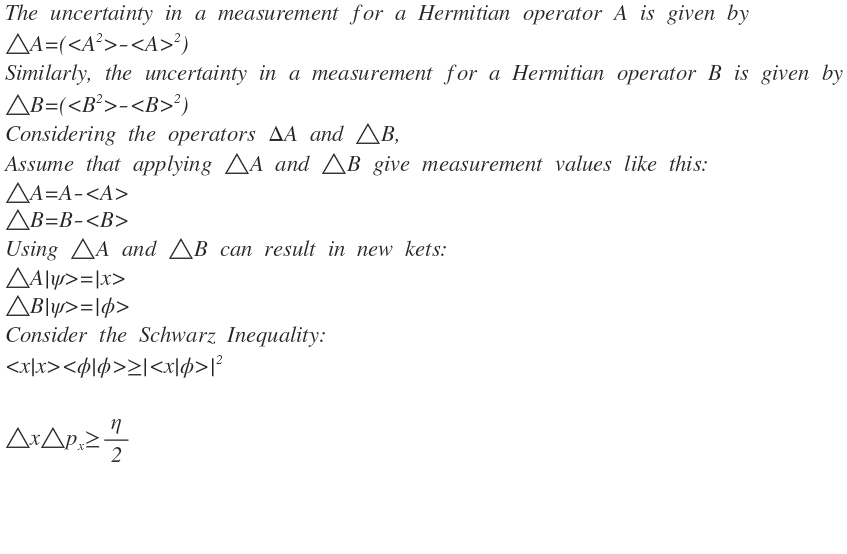Deriving the Heisenberg Uncertainty Principle from Scratch
 Hi everyone,
Hi everyone,
I've been puzzling about this for quite a while, could someone help explain this to me?
Subbing the base assumption into the Schwarz Inequality, we can eventually mathematically derive the Heisenberg Uncertainty Relation. What I'm not clear about is the basis for this assumption? Is it simply because any operator can be expressed in that form?
Please help me out with this, my Physics is noob >.< Thank you! (sorry about the formatting, I couldn't get the LaTeX to work and the Delta came out wonky)
No vote yet
1 vote
Easy Math Editor
This discussion board is a place to discuss our Daily Challenges and the math and science related to those challenges. Explanations are more than just a solution — they should explain the steps and thinking strategies that you used to obtain the solution. Comments should further the discussion of math and science.
When posting on Brilliant:
*italics*or_italics_**bold**or__bold__paragraph 1
paragraph 2
[example link](https://brilliant.org)> This is a quote# I indented these lines # 4 spaces, and now they show # up as a code block. print "hello world"\(...\)or\[...\]to ensure proper formatting.2 \times 32^{34}a_{i-1}\frac{2}{3}\sqrt{2}\sum_{i=1}^3\sin \theta\boxed{123}Comments
Can you be more clear about what you consider to be the base assumption?
Edit: I've solved it thanks to some very helpful members from the Slack Chat :)